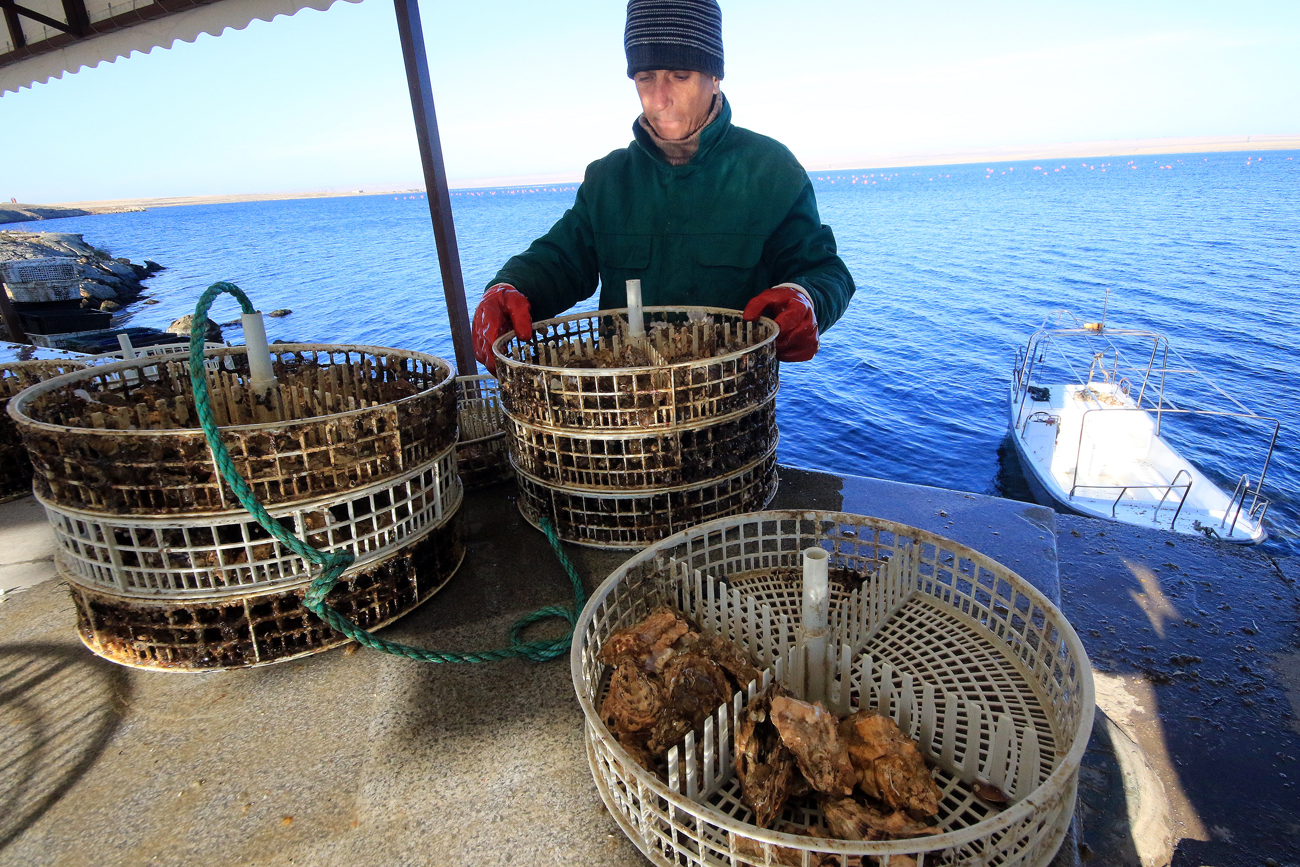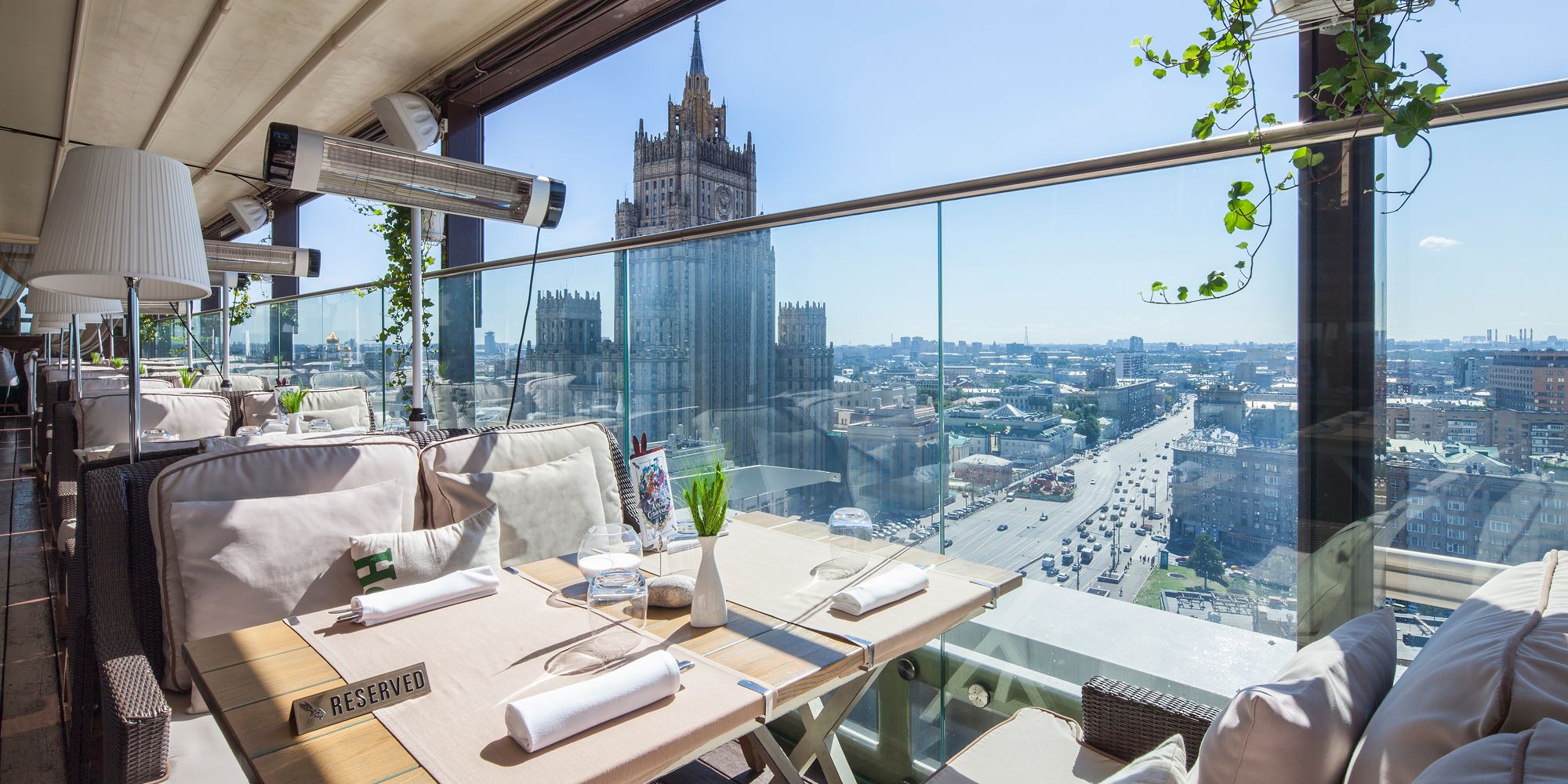Crimean company bypasses sanctions to cultivate French oysters

Placing an oyster cage underwater at an oyster and mussel farm on Lake Donuzlav in Crimea, Russia.
Alexei Pavlishak/TASSPresident Vladimir Putin's sanctions banning the import of food products from Europe are not preventing Russian restaurants from serving French oysters. In 2016, the Crimean Seafood Company delivered its first shipment of the delicacy to 200 restaurants on the peninsula, as well as to restaurants in Moscow, St. Petersburg and other cities in Russia.
After receiving permission from the Russian Federal Customs Service to import oyster larvae from France, the company started raising oysters in Crimea with French technology. General Director of Crimean Seafood Dionisyi Sevastyanov spoke to RBTH about the process.
French-quality oysters
"We cultivate oysters that, in terms of quality, do not differ from French oysters," says Sevastyanov. Currently, the company is cultivating oysters in waters on the western side of the peninsula. In the first six months of 2016, the company raised 11.7 tons of oysters, according to the Federal Fishing Agency.
The 101-acre farm is in the Donuzlav Bay, which is also a lake. "Freshwater from the mainland and salty water from the Black Sea mix in a natural way in the Donuzlav. This makes the bay an ideal place to grow French oysters, which need water with a low level of salt," explains Sevastyanov.
He explained that in order to maintain a low salinity level, the French cultivate their oysters in special claires (rectangular salt ponds), which are created artificially.
"Our specialists occasionally travel to France to attend conferences on nursery-farms where they share their experiences with other specialists and learn about new technologies," remarked Sevastyanov. He added that Crimean Seafood collaborates with famous French companies that cultivate oysters and spat (the professional term for larvae). Sevastyanov did not name his French partners.
In 2017, Crimean Seafood plans to expand its production by opening a second 497-acre farm stretching six miles near the towns of Simeiz and Alupka in the southeastern part of the peninsula. Sevastyanov believes that this expansion will help the company make deals with Russia's largest retailers.
"Metro, Auchan and X5 want to sell our products, but to meet the demand we need to expand to an industrial level of production," notes Sevastyanov. He expects the capacities at Simeiz to reach that level in one and a half to two years.
Pacific Ocean competitors
The introduction of food sanctions in 2014 boosted the development of oyster farms throughout Russia's Black Sea coast. According to the Federal Fishing Agency, the volume of oyster production in the Black Sea region in 2014 was two tons. In 2015, it grew to 30 tons, and in 2016 the figure is estimated to be 50 tons. Crimea produces approximately half of this volume, says the agency's press service.
Crimean Seafood is not the only company cultivating oysters in Crimea. Sofia Crimea operates from a small section of the Laspinskaya Bay near Sevastopol.
Although the farm has only 48 acres, Sofia Crimea is one of the largest suppliers of mussels in the region, says the company's founder Maxim Konoplyanko. "Restaurants in Crimea, the Krasnodar Region, Moscow, St. Petersburg and even Novosibirsk buy our products," notes Konoplyanko.
Unlike Crimean Seafood, which was established after the peninsula reunified with Russia in 2014, Sofia Crimea has operated for 10 years. Initially, the company had Ukrainian owners, but in 2014 they sold the business to three associates from Crimea, who today are the proprietors. "In 2014, we also decided to cultivate oysters because previously the company only grew mussels," says Konoplyanko.
Due to the sanctions, the company began buying plant material in Russia, from the official farms and nurseries in Vladivostok. Today, three types of Pacific oysters are raised in the waters of Laspinskaya Bay: Khasan, Soloviev and Pearl.
According to Konoplyanko, the oysters grown in Crimea are better tasting than those from Vladivostok because of the low salinity level of the seawater. "In the Black Sea, the salinity level is 17, while in the Far East it is 30-33. This is why our oysters are more delicate, sweeter."
Sofia Crimea will deliver its first oyster shipments in the spring of 2017, Konoplyanko said. "We will increase the oyster production and sales volumes, since today the oyster is one of the most sought-after products in Crimea and mainland Russia."
Read more: August in Sakhalin: Whale-watching, warm lakes and water sports>>>
Subscribe to get the hand picked best stories every week
All rights reserved by Rossiyskaya Gazeta.
Subscribe
to our newsletter!
Get the week's best stories straight to your inbox

